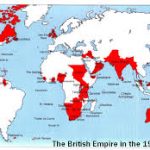The former government in Spain, evicted by a powerful majority of votes last November 20, had two Robespierres and one Fouquier-Tinville. I refer to leaders of the French Revolution (q.v.). Now their Spanish clones have almost gone. They must wait in parliamentary solitude for the Spanish people to vote socialist again in 1014.
Antoine-Quentin Fouquier-Tinville (June, 1746 – May, 1795)
He was born in Péruel in Picardy, and after the usual religious education became a lawyer. Still very young, he rose rapidly from minor legal offices during the slowly rising tides of the French Revolution.
F-Q was appointed Public Prosecutor in the Revolutionary Tribunal in March, 1793; the Reign of Terror, as it is called, was already functioning. The people of France, advised by the Jacobins, had decided to ensure there was food for the masses and justice in the courts by killing other Frenchmen, in their home by ill-disciplined mobs, or by public use of the guillotine, following a ‘trial’ for treason. It was judged treasonable to have been born aristocratic, for instance. It was treasonable to have been a successful mayor of a town before the Revolution. It was treasonable to have practised medicine without being a member of a revolutionary group. It was treasonable to have written a book or article unsympathetic to the Revolution.
When the violence started, F-Q was a close friend of one of the inciters, a revolutionary journalist called Camille Desmoulins. The latter assumed he was perfectly safe, as his writings were revolutionary, and the Public Prosecutor was his friend.
History chiefly describes Fouquier-Tinville as middle-class, hard-working, zealous and ruthless. Given that radical revolutionary leaders are always middle-class, this is normal. The middle-class in any country where violent change is required must use the working class as tools. It is a matter of numbers. Real radicals are few and far between, whereas huge mobs can be summoned, bribed and easily influenced by people the mobs see as ‘toffs’.
In the Tribunal F-Q supervised the documenting and presentation of ‘evidence’ required to prosecute, judge and sentence the accused in what would seem a democratic and correct procedure. He was chosen because he was an acknowledged expert at this task. He prosecuted more than two thousand French men, women and even children and sent them to the knife. But some would say that the task was not so challenging; when all is said and done, the guilty ones in a revolution are those who do not agree with you and would prefer to struggle on as they did before.
Fouquier-Tinville personally supervised the trial of Queen Marie-Antoinette, a brave but foolish Austrian woman who stood up to him in the Tribunal, though she was intelligent enough to know it was useless. He also dispatched his former friend Desmoulins, who had just enough time to denounce him in an essay. He then set about the elimination of the other revolutionary club – les Girondins. This was easy too, because the other club did not agree with anything wanted by les Jacobins.
Following the unavoidable fall of the ultimate leader Robespierre, it was only a question of time before Fouquier himself was arrested. He complained bitterly about this, as is to be expected, but he had not been wise enough to realise that citizens who choose to do murder through the Courts of Justice with the authority of an Army behind them instead of indulging their pleasure in dark alleys, will finally be caught out.
The ‘Thermidorians’ arrested their own Public Prosecutor, shut him up with a crowd of aristocrats and other counter-revolutionaries (who feared to touch him), and put him on trial for his life. In the dock, he denied any acts of personal violence, claiming he had just obeyed orders given him by the Revolutionary Council. He went to the guillotine shouting his innocence. He was just thirty-nine.
Maximilien-François-Marie-Isidore de Robespierre (May, 1758 – July, 1794)
He was born in Arras; proclaiming himself leader of the Jacobins, he virtually led the Revolution in France, and played a principal rôle in the Reign of Terror.He was a reforming lawyer from northern France, and as such was elected to the Estates-General in 1789.
A prominent Jacobin, he was known to members as ‘The Incorruptible’. At the National Convention he spoke on behalf of the radical Montagnard Faction, and by 1793 he dominated the infamous Committee of Public Safety (see the books of Baroness Orczy and A Tale of Two Cities by Charles Dickens). This was a kind of court set up to destroy all opposition to the Revolution. Without such committees, without confiscation of estates and manors, without judicial murder of French citizens, it has been deemed possible by many historians that an organised and intelligent democracy might have emerged in France by the turn of the century. But radical and violent revolutionaries such as Robespierre, Barras, Marat, Danton and Fouquier-Tinville chose the bloody path towards desperately needed reform. What could have been an important and bloodless change to Socialism became a massacre that led to the sudden rise of Napoleon Bonaparte and his European Wars, leaving millions dead.
Robespierre instituted economic controls such as the confiscation of private property, and offered death to all or any opponents. He surprised and shocked the Catholics by replacing God by a ‘Supreme Being’. Of course he went too far, as do all radicals, and was arrested on the rather obvious charge of being a dictator. He was guillotined in the Thermidorian Reaction of 1794. He was thirty-six years old.
After the execution of Robespierre, a large majority of the Jacobins were judicially executed or simply murdered. Robespierre’s colleague Marat was stabbed to death in his bath by his fellow revolutionary, the aristocratic Charlotte Corday.










Leave A Comment